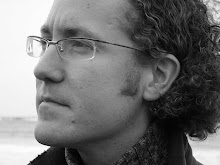Thanks to David Bordwell for his very flattering comments about my presentation on his blog. David, and the rest of the Madison Communication Arts department were incredibly welcoming when I presented there last Monday (12th March) and the session was an absolute pleasure. Now that David has alluded to my findings and given a brief description of my presentation you’re probably interested in finding out more. Sadly, I’m going to have to ask you to watch this space just a while longer. As is the way in academia, the publication of academic papers takes a long time and the paper that describes my findings is not yet ready for public distribution…..I know, I know: I’m a big tease. I promise you it will be worth the wait and I’ll publish the paper on my blog as soon as it is available.
In the meantime I can give you a glimpse of the “little yellow dots” David refers to.

This image is a screengrab of a software tool I created called (rather cheesily) Gazeatron. The tool allows me to plot the gaze position of multiple viewers on to the video they were viewing. The image above illustrates where 17 people were looking during this frame of the film (the yellow spots were viewers who could hear the audio and the pink were viewers who could not). Gazeatron allows you to see the same data in real-time as the video plays. By observing the swarming behaviour of the gaze positions whilst multiple viewers watch a film you gain an incredibly detailed insight into the viewing experience. Gazeatron also provides automated analysis for features of the eye movements to provide objective measures in supplement to the subjective observations.
Existing eye tracking tools do not allow you to analyse film viewing in this way and, I would argue reducing viewer attention to a film to static screenshots or data points does not give you a feel for the dynamics of the viewing experience. I’ll work on posting a video of Gazeatron so you can all see what I mean.
A bit of background on eye tracking. Each spot in the image above represents the point where a single viewer is looking. This is important as it tells us, roughly the part of the visual field they are attending to and, therefore processing at any moment in time. You may think you are aware of the whole visual field but in fact you are only able to process a very small portion to a high degree of accuracy at any one time. When you want to process a new part of the visual field you shift your eyes (perform a saccadic eye movement) so that the light from the new target is projected into the region of highest sensitivity in the eye, referred to as the fovea. These saccadic eye movements are very quick and we are not aware of them as our brains “stitch” the images either side together to create the impression of a stable visual world. By recording these eye movements we can infer the moment-by-moment experience of a viewer.
Eye movements can be recorded using a technique known as Eye tracking. There a variety of ways to track somebody’s eyes such as sclera coil and dual-purkinje (some clearly more scary than others). The most common technique used today, and the one I use is Corneal-Reflection. These trackers shine infrared lights onto the eye and film the reflected image using an infrared camera. By locating the iris and the infrared light reflected off the cornea the gaze of the viewer can be calculated. The gaze is simply a vector pointing out from the viewer’s eye into space. Therefore, eye trackers can be used to tell us where people are looking on a computer screen, table top, real-world interaction or….whilst watching a film.
The eye trackers I use are the Eyelink II head-mounted and the Eyelink 1000 tower mounted tracker, both from SR Research. These trackers are located around the University of Edinburgh, mostly in John Henderson’s lab which I am part of.
Tracking a viewer’s eyes whilst they watch a film is not as simple as you might think. The Eyelink trackers all come with software that allows you to present videos but they do not, currently have accompanying tools for analysing the eye movement data in the way I’ve described above. Most other trackers do not provide assistance in presenting films and a lot of previous researchers have resorted to tracking viewers using a head-mounted real-world tracker and recording a video to see what they are looking at (a similar technique is used in driving studies). The only other tracker I have used that is suitable for presenting films is Tobii. This system is incredibly easy to use as it is focussed at usability studies and as a hands-free interface for disabled users. The Tobii eye trackers are incredibly well designed but their price, ~£17,000 puts them out of the reach of most users (the price issue is the same with all eye trackers). Their accuracy is also not as good as the Eyelink systems which is why most vision researchers don’t use them.
If you’re looking for a cheaper option there is the option of building your own eye tracker. Derrick Parkhurst has developed open-source software and instructions for how to construct the necessary hardware to build your own eye tracker. The openEyes project is a great idea although I’m yet to have a go. If you have a go, best of luck and tell me how it goes.
If anybody has any further questions about eye tracking and film please either post a comment below or e-mail me.
As for what I have found by eye tracking film viewers well……that’ll still have to wait. Sorry. For the time being I hope you enjoy the picture of little yellow and pink spots. Who’d have thought seeing spots could be so useful!





